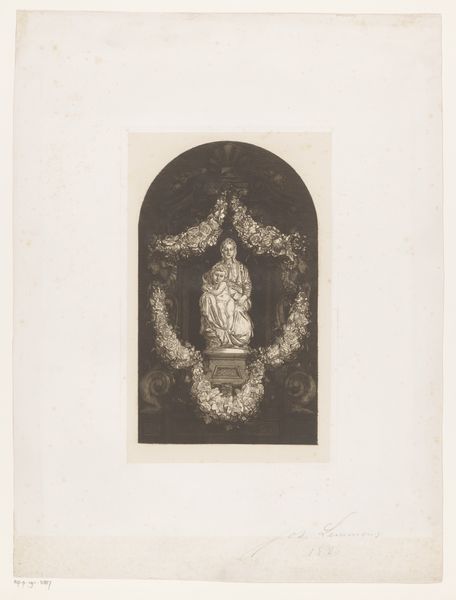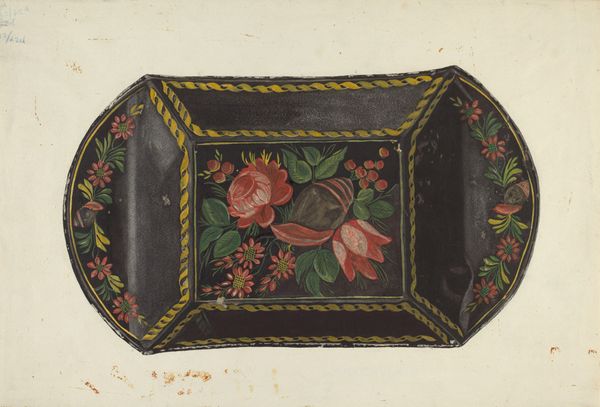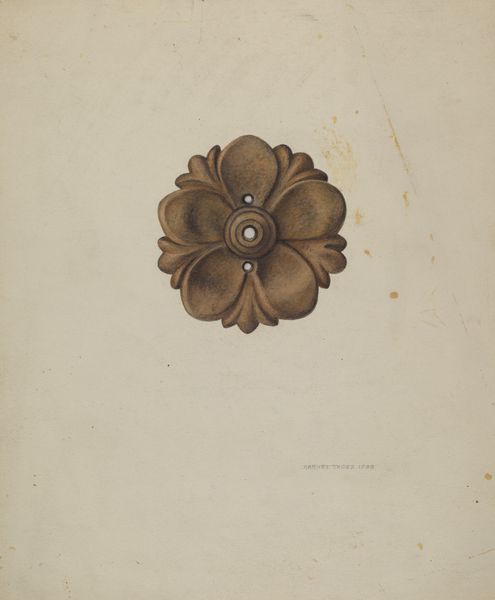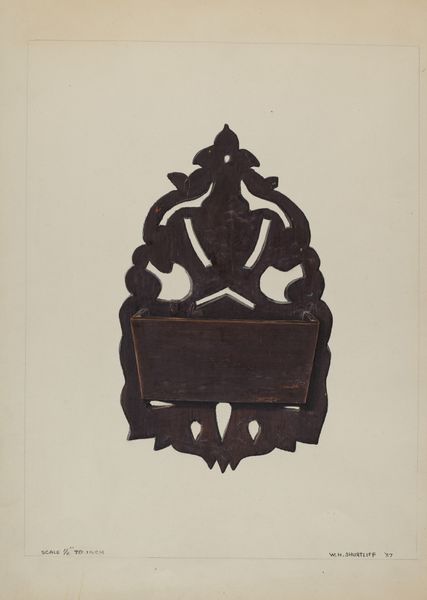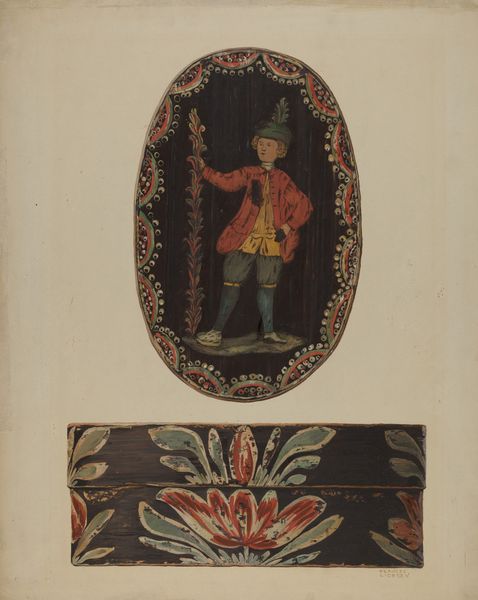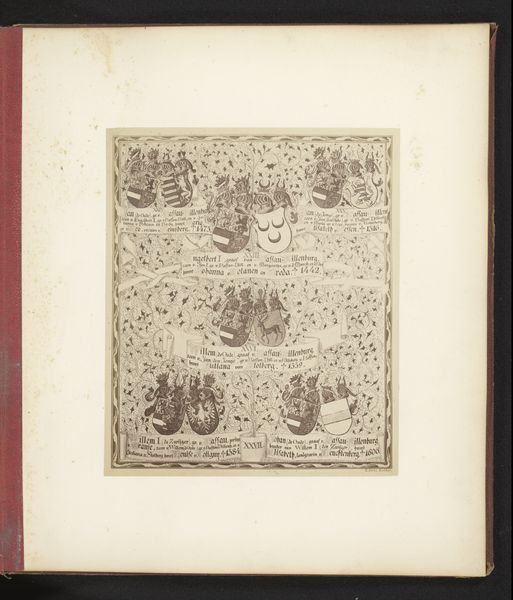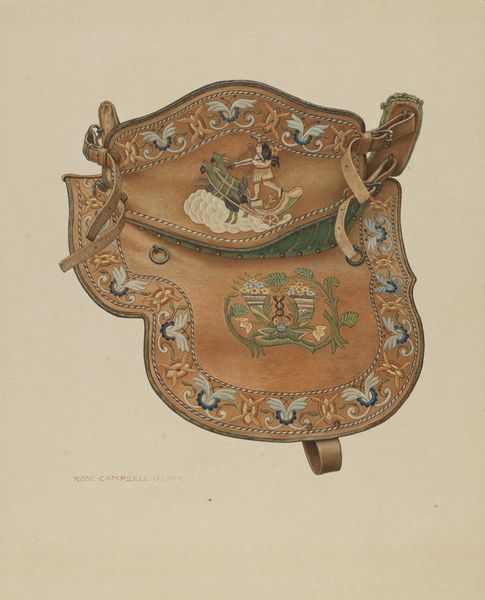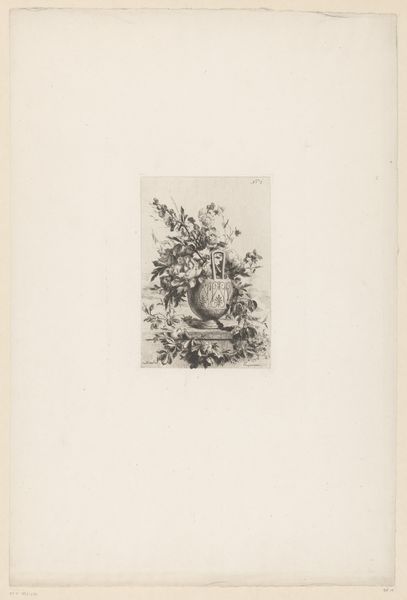
drawing, mixed-media, watercolor
#
drawing
#
mixed-media
#
watercolor
#
coloured pencil
#
watercolour illustration
#
decorative-art
Dimensions: overall: 30.4 x 22.7 cm (11 15/16 x 8 15/16 in.) Original IAD Object: 7 1/2" high; 4 1/4" wide
Copyright: National Gallery of Art: CC0 1.0
Editor: Here we have Daniel Fletcher’s "Match Holder" from around 1939, a mixed-media piece employing drawing, watercolor, and colored pencil. There's an intriguing tension between its decorative function and somewhat somber palette. What social commentary might Fletcher be making through this design? Curator: The Great Depression lingered throughout the late 1930s. Consider the object's purpose: holding matches. It speaks to basic needs – light, warmth – essentials often taken for granted. How does Fletcher elevate this humble, everyday object, or does he? Editor: I see that it's both elevated, by its intricate decorations, but simultaneously grounded by what feels like a used, maybe even worn down, effect. I mean, why create an aged appearance if it is not for commentary on the state of the world? Curator: Precisely. The decorative arts served a powerful role in shaping national identity and cultural values, especially during times of economic hardship. What does this suggest about the society for whom Fletcher was designing? Were these merely comforting visuals, or did they perhaps function as subtle critiques of material excess during a time of widespread poverty? Editor: I suppose it forces a conversation on how people can enjoy aesthetically-driven crafts or designs even when basic needs aren’t met. It questions if everyone gets a slice of the "aesthetic pie." Curator: Good question! Consider, too, the likely spaces in which such an item might be displayed and how its utility inflects its reading. Match holders were prominently visible, right? Editor: True. This discussion makes me reconsider decorative art's capacity to participate in bigger social dialogues. Thanks! Curator: Absolutely. It underlines how even seemingly minor objects can hold considerable historical and cultural weight, speaking to the complexities of their time.
Comments
No comments
Be the first to comment and join the conversation on the ultimate creative platform.
